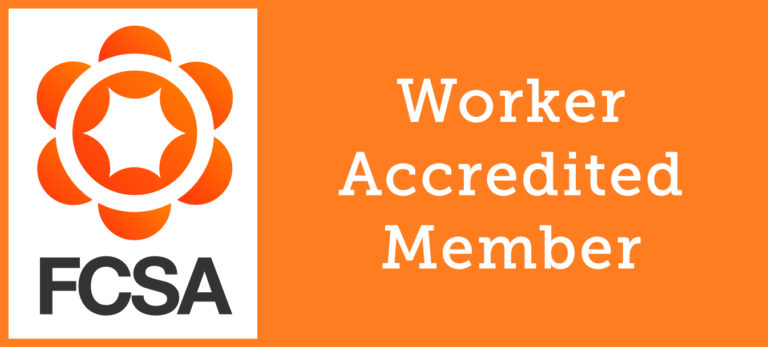
IR35 reform has been a hot topic across the contracting industry for the past two years due to the reforms that were introduced into the public sector in 2017 being extended into the private sector from April 2021. However, the reform dates back over twenty years.
The off-payroll working rules, known as IR35, were introduced with the purpose of identifying so-called ‘disguised employment’. The rules may apply to contractors who provide their services personally through their own limited company or other type of intermediary to a third-party end-client. The rules aim to ensure that workers who would have been an employee if they were providing their services directly to the client, make the same tax and National Insurance contributions an employee would. Over the past twenty years, the legislation has seen multiple amendments as HMRC continue to tackle tax avoidance in the UK. To gain a better understanding of the legislation and how best to navigate the forthcoming changes, it can be useful to look back at its history to understand its purpose, successes, and failures.
1999-2001
IR35 was first mentioned as the 35th item in the 1999 pre-budget speech and implemented on 6th April 2000 and part of Finance Act 2000. The legislation was designed to close a loophole in the taxation system that allowed for avoidance schemes to be easily implemented using partnerships and limited companies. At the time, employers were laying off ‘employees’ and re-hiring them on a contracted basis the following week. By doing this, companies were able to avoid employer contributions and employees were able to claim more against their tax and receive a higher take-home pay. A win-win situation for the company and the worker, but not for HMRC, who were losing out on billions of pounds in National Insurance and tax contributions.
In the original press-release from September 1999, the Paymaster General acknowledged the importance of a flexible labour market and outlined several proposed changes that aimed to ‘stop [this] avoidance, from next April, but in a way that is more tightly targeted and does not prevent the use of intermediaries where they provide non-tax advantages.’
On 1st February 2000, guidelines that defined disguised employment was published. The guidance confirmed that all contractors with standard agency contracts would be assumed to fall inside IR35 unless proven otherwise. This meant that in some cases, true contractors would fall inside IR35. According to Contractor Weekly, many believed that the ‘legislation was put together too quickly and seemed drafted as a panic solution to the increasing number of contractors.’ As such, the Professional Contractor Group (now IPSE) appealed the legislation and received permission for a judicial review, which was later dismissed in December 2001.
2010
When the Coalition government were elected in 2010, a review of IR35 was tasked as a priority. After a full review, the Office of Tax Simplification (OTS) proposed three possible solutions to address the on-going criticism of the legislation: abolition of the legislation, the introduction of a genuine business test, or preservation of the legislation but with improved administration that provided a more transparent and straightforward process. The Chancellor opted for the latter.
2015-2017
In mid-2015, the government release a discussion paper that explored options to make the intermediaries legislation more effective. This argued that the ‘[legislation] was introduced in 2000 to tackle the avoidance of employment taxes by those who work through intermediaries, primarily their own company, often known as a Personal Service Company (PSC). The government believes this is not working as effectively as it should be and non-compliance with the legislation is widespread.’ The paper claimed that tackling disguised employees was a ‘complex problem’ that was difficult to address without impacting those who were genuinely self-employed. The paper put forward the notion that the responsibility for determining an IR35 status should fall on the engager, rather than the contractor/worker. In 2017, IR35 was updated, transferring the status determination responsibility from the contractor to the end-client, however the new rules were only applicable to those operating in the public sector.
The updated legislation stated that:
- Instead of contractors being able to self-certify their IR35 status, the end-client would be responsible for correctly determining whether a contracted role fell inside or outside IR35
- If a role was deemed to be outside IR35, the contractor would continue to be paid gross into their Ltd company
- If a role was deemed to fall inside IR35, the contractor would have to be run through a ‘dummy’ payroll, with PAYE and National Insurance accounted for by the feepayer, who becomes the deemed employer. This could be the end-client, agency or Umbrella company, depending on who is paying the contractor’s limited company.
- If an IR35 status was determined incorrectly, HMRC reserved the right to question the status and recoup any unpaid tax liabilities.
What is changing on April 6th, 2021?
On 6th April 2021, the 2017 IR35 reform will be extended to the private sector, meaning businesses within the private and public sector who use contractors will be impacted by IR35. Alongside the extension into the private sector, HMRC will also introduce additional clauses and clarifications to bolster the rules introduced in 2017, including:
- Status Determination Status (SDS) – a document that details the status determination that must be distributed both direct to the contractor and down the supply chain, aiming to create transparency for all parties.
- Reasonable Care – End-clients must take ‘reasonable care’ when determining status, otherwise any liabilities will transfer to them automatically, meaning blanket status determinations will not be acceptable (although blanket bans on PSCs are permitted).
- Status Disagreement Process – Both the contractor and the feepayer will have the right to challenge the SDS. Whoever is making the challenge should submit a formal disagreement to the end-client in writing, clearly stating the objection. The end-client will need to have a process to deal with this within 45 days, otherwise all liabilities will transfer to them.
- Transfer of Debt Provision – allows HMRC to recover any unpaid tax and national insurance liabilities direct from the agency. If this is unsuccessful, the end-client is next in line. This provision was introduced due to the amount of non-compliance that has occurred since 2017 by companies who were administering gross payments despite an ‘inside IR35’status determination by the public sector end-client. If caught, such companies can easily fold, making it impossible up to now for HMRC to recover the unpaid liabilities.
- 5% expenses allowance scrapped – as for the public sector reforms, contractors who are inside IR35 will no longer benefit from the 5% expenses allowance, due to the way the deemed payment calculation operates.
Want to learn more about how IR35 will impact your business?
Government Guidance – changes to off-payroll working
IR35 – What responsibilities do Recruitment agencies hold?











